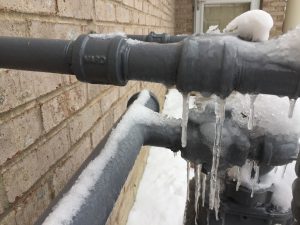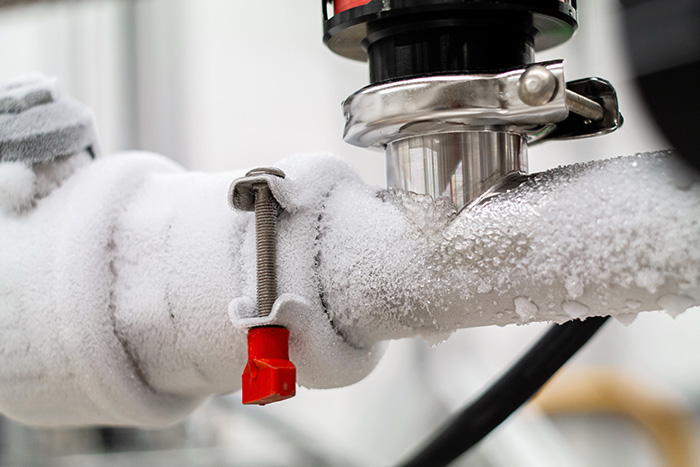Important Advice to Avoid Frozen Pipes in Cold Weather: Professional Insights
Important Advice to Avoid Frozen Pipes in Cold Weather: Professional Insights
Blog Article
What're your ideas with regards to Helpful Tips to Prevent Frozen Pipes this Winter?

Winter can ruin your plumbing, particularly by freezing pipes. Right here's how to prevent it from taking place and what to do if it does.
Intro
As temperatures drop, the threat of icy pipes increases, possibly bring about expensive repair work and water damage. Recognizing exactly how to avoid frozen pipelines is important for property owners in cool climates.
Understanding Frozen Pipelines
What triggers pipelines to ice up?
Pipes ice up when exposed to temperature levels below 32 ° F (0 ° C) for prolonged durations. As water inside the pipes ices up, it increases, putting pressure on the pipeline walls and possibly causing them to rupture.
Threats and problems
Frozen pipes can bring about water supply interruptions, property damage, and costly fixings. Ruptured pipes can flood homes and cause extensive structural damage.
Indications of Frozen Piping
Identifying frozen pipes early can prevent them from bursting.
How to identify icy pipes
Try to find reduced water flow from faucets, unusual odors or sounds from pipes, and visible frost on revealed pipelines.
Avoidance Tips
Shielding prone pipes
Cover pipes in insulation sleeves or use heat tape to shield them from freezing temperature levels. Focus on pipes in unheated or exterior locations of the home.
Heating techniques
Maintain interior spaces adequately warmed, particularly areas with pipes. Open closet doors to enable cozy air to distribute around pipes under sinks.
Securing Outdoor Pipes
Garden tubes and outside taps
Disconnect and drain pipes yard pipes before wintertime. Mount frost-proof spigots or cover outside taps with protected caps.
What to Do If Your Pipelines Freeze
Immediate actions to take
If you presume icy pipes, keep taps open to ease stress as the ice thaws. Make use of a hairdryer or towels soaked in hot water to thaw pipelines gradually.
Long-Term Solutions
Architectural adjustments
Consider rerouting pipes away from outside wall surfaces or unheated locations. Include added insulation to attic rooms, cellars, and crawl spaces.
Upgrading insulation
Invest in top quality insulation for pipes, attics, and walls. Proper insulation helps preserve consistent temperatures and reduces the threat of icy pipelines.
Verdict
Protecting against icy pipes requires aggressive procedures and fast actions. By comprehending the causes, indicators, and preventive measures, homeowners can protect their pipes during winter.
5 Ways to Prevent Frozen Pipes
Drain Outdoor Faucets and Disconnect Hoses
First, close the shut-off valve that controls the flow of water in the pipe to your outdoor faucet. Then, head outside to disconnect and drain your hose and open the outdoor faucet to allow the water to completely drain out of the line. Turn off the faucet when done. Finally, head back to the shut-off valve and drain the remaining water inside the pipe into a bucket or container. Additionally, if you have a home irrigation system, you should consider hiring an expert to clear the system of water each year.
Insulate Pipes
One of the best and most cost-effective methods for preventing frozen water pipes is to wrap your pipes with insulation. This is especially important for areas in your home that aren’t exposed to heat, such as an attic. We suggest using foam sleeves, which can typically be found at your local hardware store.
Keep Heat Running at 65
Your pipes are located inside your walls, and the temperature there is much colder than the rest of the house. To prevent your pipes from freezing, The Insurance Information Institute suggests that you keep your home heated to at least 65 degrees, even when traveling. You may want to invest in smart devices that can keep an eye on the temperature in your home while you’re away.
Leave Water Dripping
Moving water — even a small trickle — can prevent ice from forming inside your pipes. When freezing temps are imminent, start a drip of water from all faucets that serve exposed pipes. Leaving a few faucets running will also help relieve pressure inside the pipes and help prevent a rupture if the water inside freezes.
Open Cupboard Doors
Warm your kitchen and bathroom pipes by opening cupboards and vanities. You should also leave your interior doors ajar to help warm air circulate evenly throughout your home.

We were shown that report on Prevent Frozen Pipes through an acquaintance on another domain. Sharing is good. Helping others is fun. Thanks for your time spent reading it.
Further Details Report this page